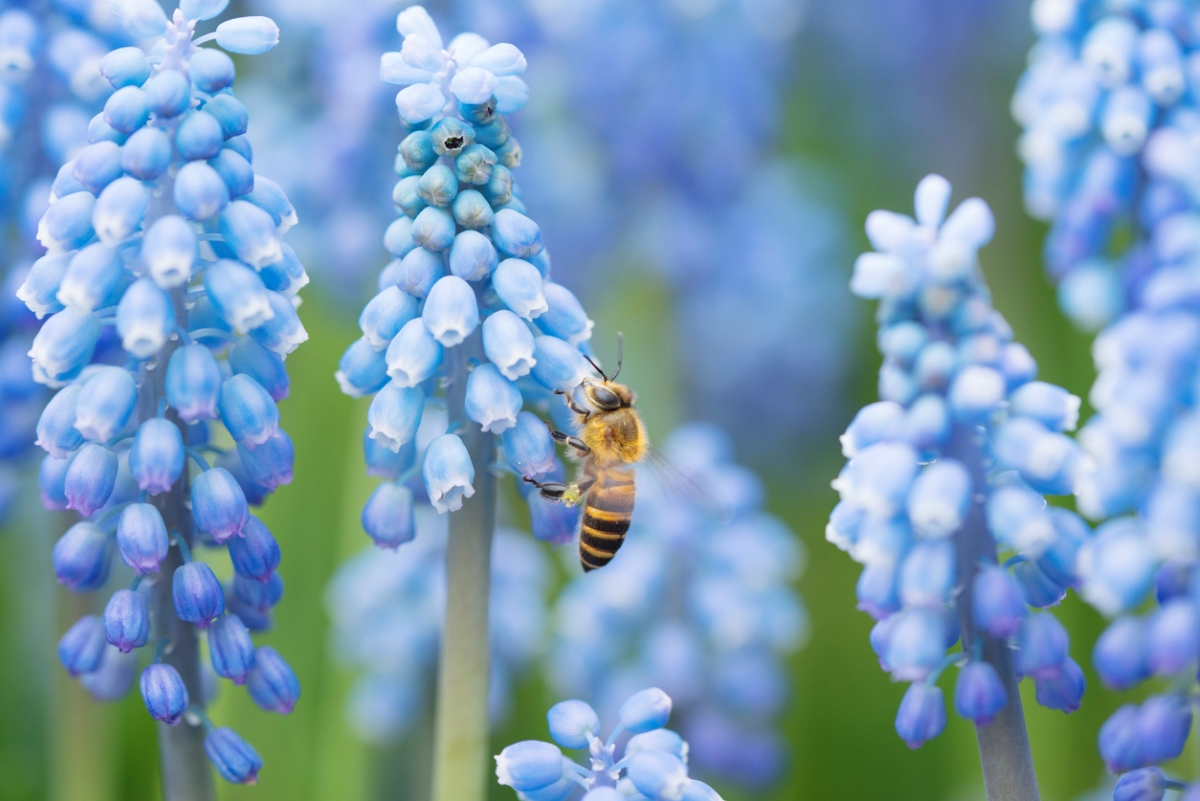

We may earn revenue from the products available on this page and participate in affiliate programs. Learn More ›
With recent declines in both native and non-native bee populations caused by colony collapse disorder, climate change, and pesticides, it’s more important than ever to plant flowers that will seduce and sustain those essential pollinators. Home gardeners can help preserve bees’ health, and improve the likelihood that blossoms on fruit trees and vegetables will be pollinated.
Flowers that attract bees tend to have white, yellow, blue, or violet hues, since those insects have difficulty seeing red. Although bee-friendly plants aren’t necessarily native types, natives typically provide more nectar and pollen than hybrids do.
1. English Lavender (Lavandula angustifolia)
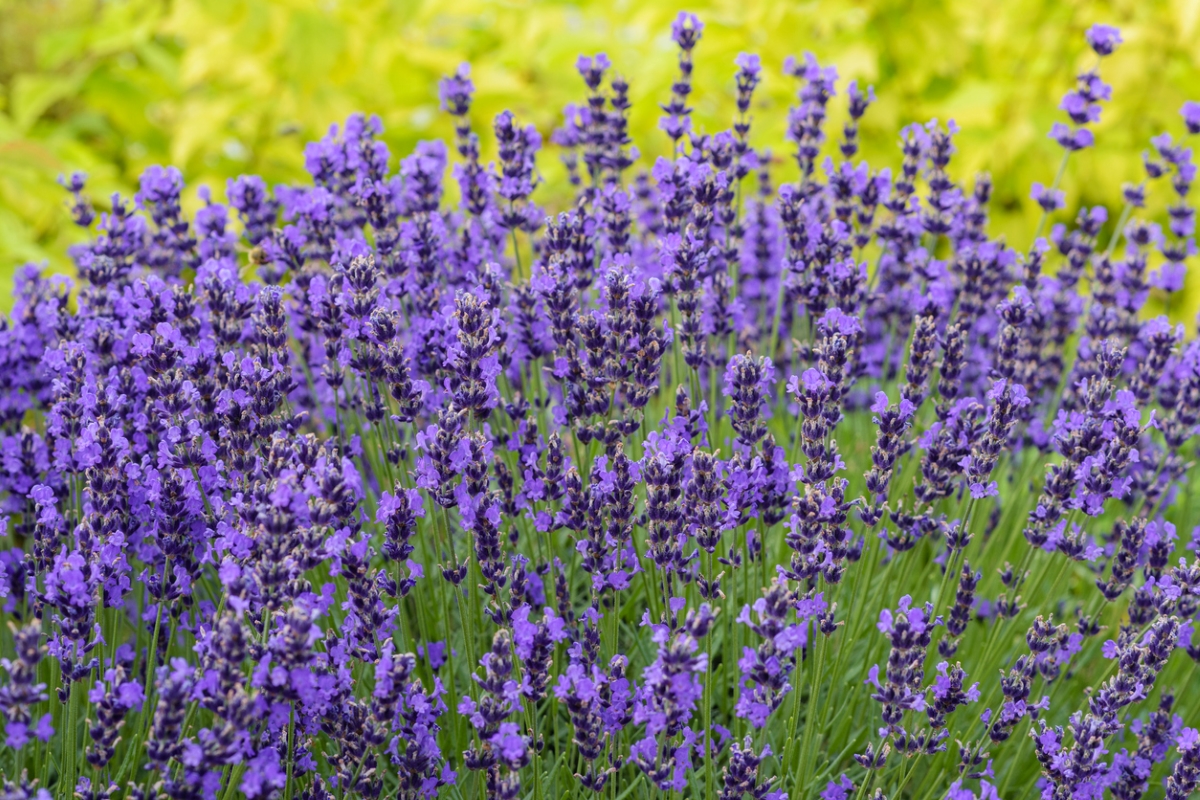
If you already have lavender in your yard, then you might have noticed that when it’s in bloom, it attracts bees like a magnet. That’s because the fragrant plant has both pollen and nectar to feed the bees. It typically blooms during a midsummer gap when bees are usually the hungriest but have fewer pickings.
Most varieties of the perennial herb grow in USDA Zones 5 through 8 and reach maturity in 3 years, boasting vibrant blooming stalks for bees and butterflies. After the first year, lavender is drought-tolerant.
2. Annual Sunflower (Helianthus annuus)
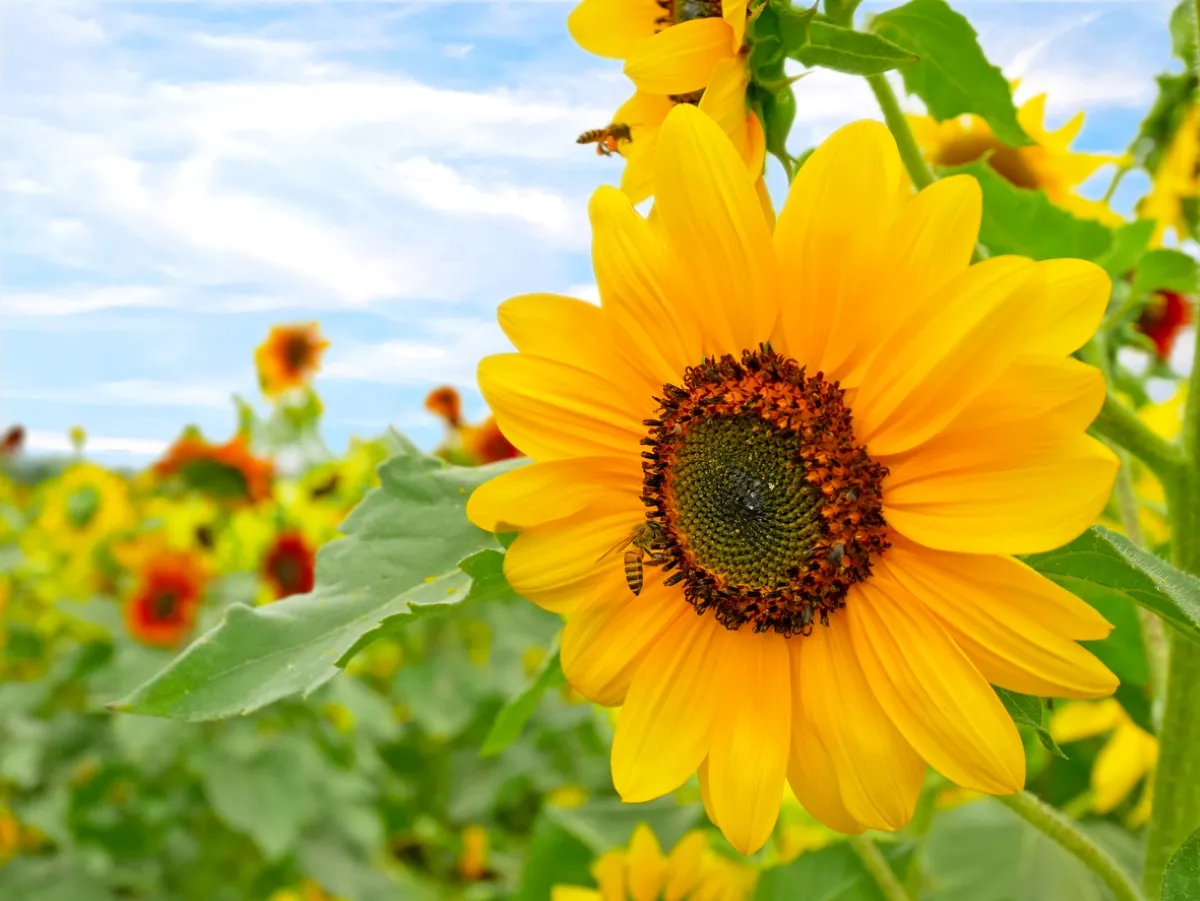
Sunflowers are garden showstoppers among flowers that attract bees. With their impressive height and bright blooms, it’s easy to see why gardeners are attracted to them. Bees are drawn to the smorgasbord of pollen and nectar found in the flowers’ large centers. As an annual, sunflower requires yearly seeding, though birds and wind often do the job for you.
The sunflower comes in plenty of sizes and colors, and can grow in most any soil as long as it has full sun. Sow seeds after danger of frost and water regularly until established, after which they can take some drought.
RELATED: How to Grow Picture-Perfect Sunflowers at Home
3. Lamb’s Ear (Stachys byzantina)
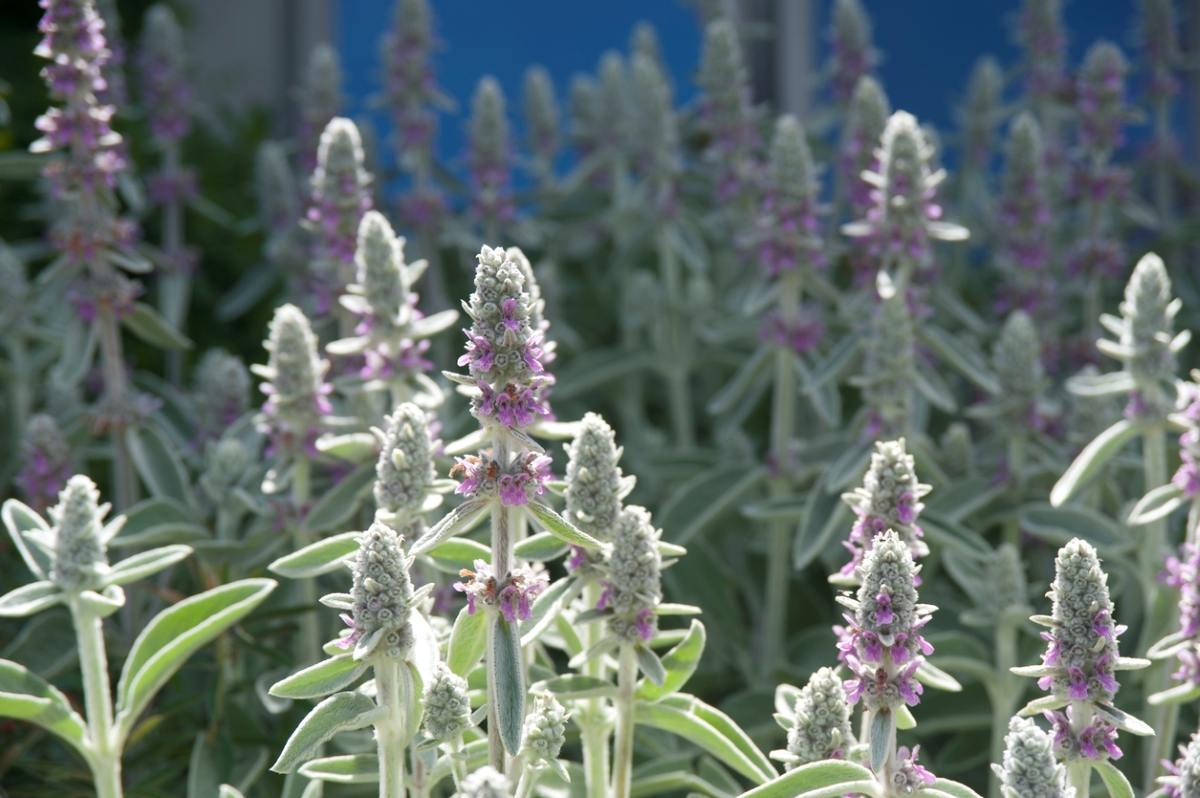
This greenish-gray plant lives up to its name, with leaves that are as soft and fuzzy as a lamb’s ear. The hardy plant can tolerate a multitude of soil and sun conditions, and it sends up spikes of purple flowers in late spring and early summer that attract bees (and hummers) like crazy. Grow the herbaceous perennial in zones 4 through 8 and give it full sun. The low-maintenance lamb’s ear can get by with nearly dry conditions after established, and deer and rabbits leave the stems alone for the bees to enjoy.
4. Black-Eyed Susan (Rudbeckia hirta)

Native to North America, black-eyed Susan (also known as Rudbeckia) is a cheerful addition to any garden, and a honeybee favorite. Bees are attracted to the bright yellow, brown-centered flowers. A hardy perennial, black-eyed Susan grows best in slightly acidic soil and full sun or light shade. Although it needs medium water the first year or so, the plant can survive periods of drought in USDA Zones 3 through 11. Just deadhead for more flowers and bee nectar and cut it a few inches above the ground after the first frost.
RELATED: Late Bloomers: 25 Summer Flowers to Keep Color in Your Garden
5. Butterfly Bush (Buddleja davidii)
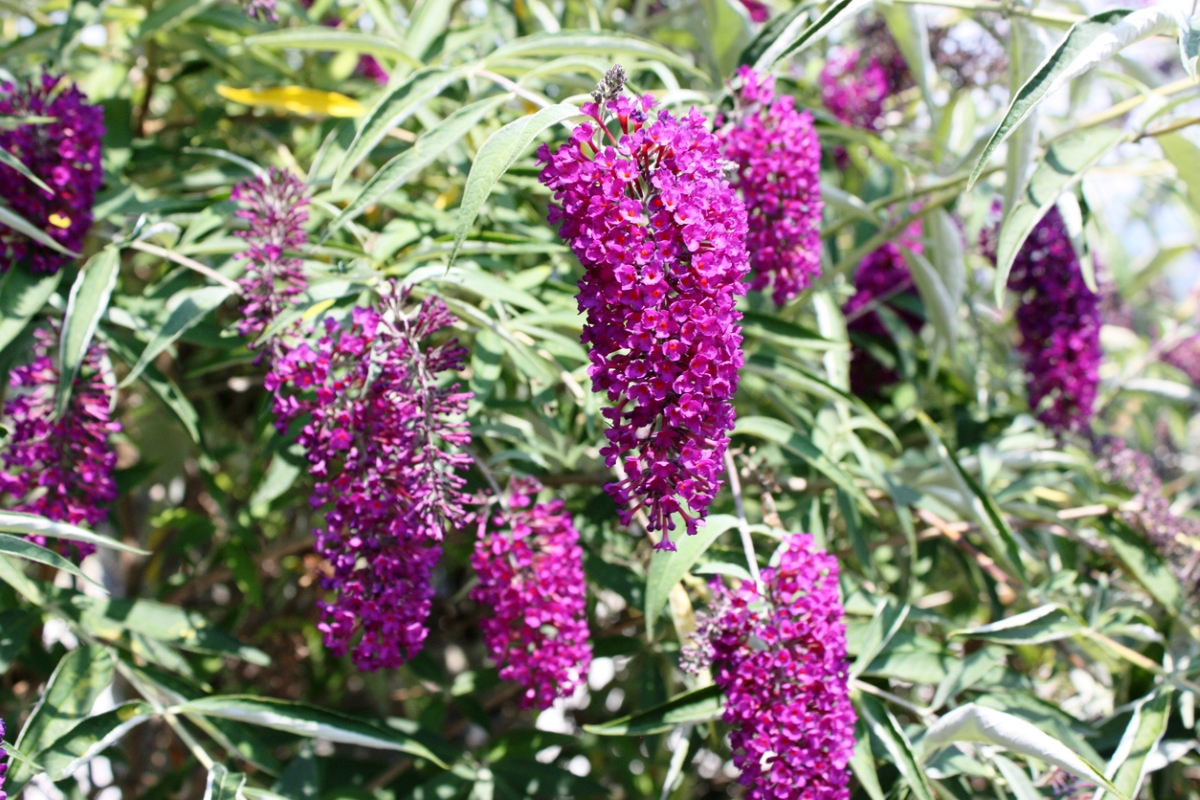
Butterfly bush, as its name implies, attracts butterflies because its large, bright flowers are chock full of nectar. The flowers appeal to bees, too. These low-maintenance shrubs flower in late summer and early fall, with fragrant blooms that make beautiful cut flowers. Plant them in average, well-draining soil in USDA Zones 5 to 9.
Don’t overwater your butterfly bush and simply prune in spring after new growth appears on the stems, cutting to just above new healthy leaf buds. Although the shrub has been reported as invasive in some parts of the Northwest, it won’t take over in most climates, especially drier ones.
RELATED: 10 Fast-Growing Plants for (Almost) Instant Curb Appeal
6. Chives (Allium schoenoprasum)
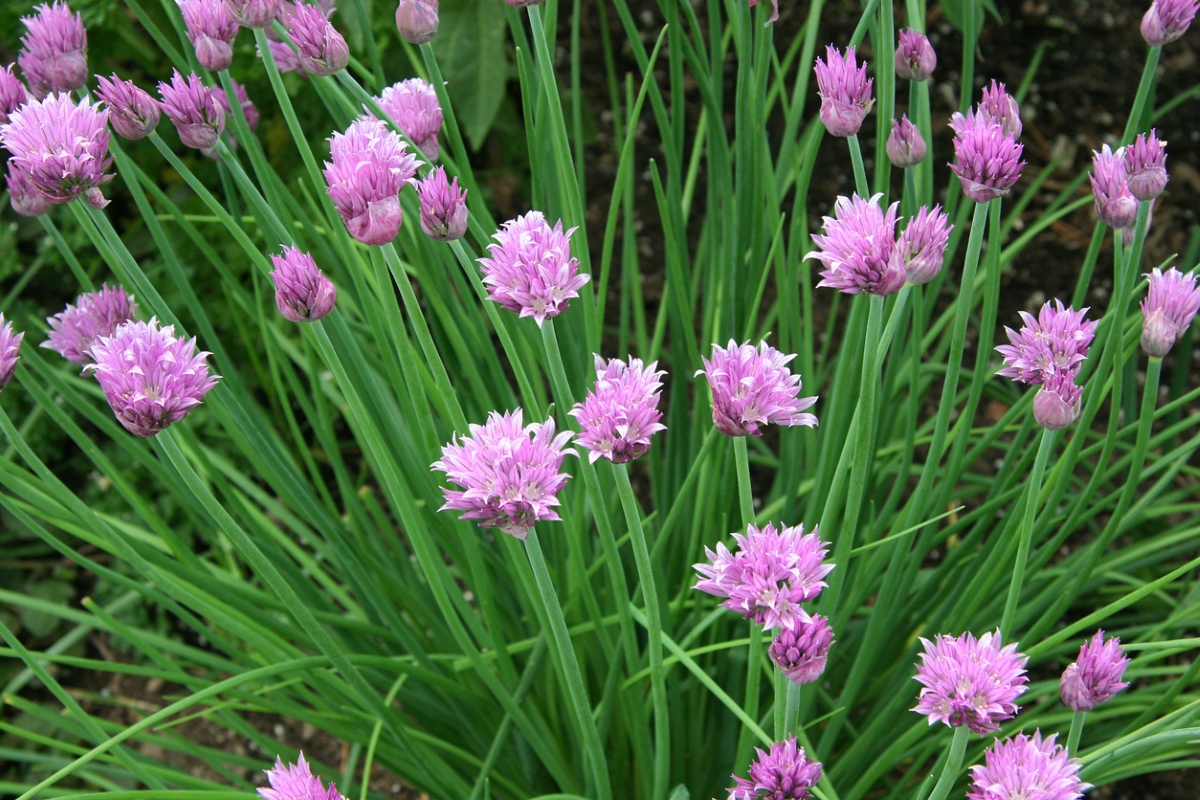
Because they flower early in the season, chives will provide some of the first nectar for bees coming out of their winter dormancy. The perennial powerhouse is easy to grow in almost any region and climate. An added bonus? The flavorful herb is great for cooking. Plant rooted clumps in spring after frost in zones 3 to 9, and divide them in spring after about 3 years. Water chives deeply and place some mulch around the plant to help keep roots cool and moist.
RELATED: 15 Perennial Herbs to Grow for Years of Fresh Flavor, Pest Control, and Cleaning Supplies
7. Coneflower (Echinacea)

The purple coneflower, also known as echinacea, is one of the biggest draws for bees. Drawn to wildflowers for their color, bees forage on both the nectar and the pollen that the plants produce. The native perennial blooms for a long period during mid-summer to fall in USDA Zones 3 to 9. It tolerates most soil types, but does best with plenty of organic matter added to the soil. Moderate water is best for the coneflower, though it can take short periods of drought, and it needs little to no fertilizer.
8. Salvia (Salvia spp.)
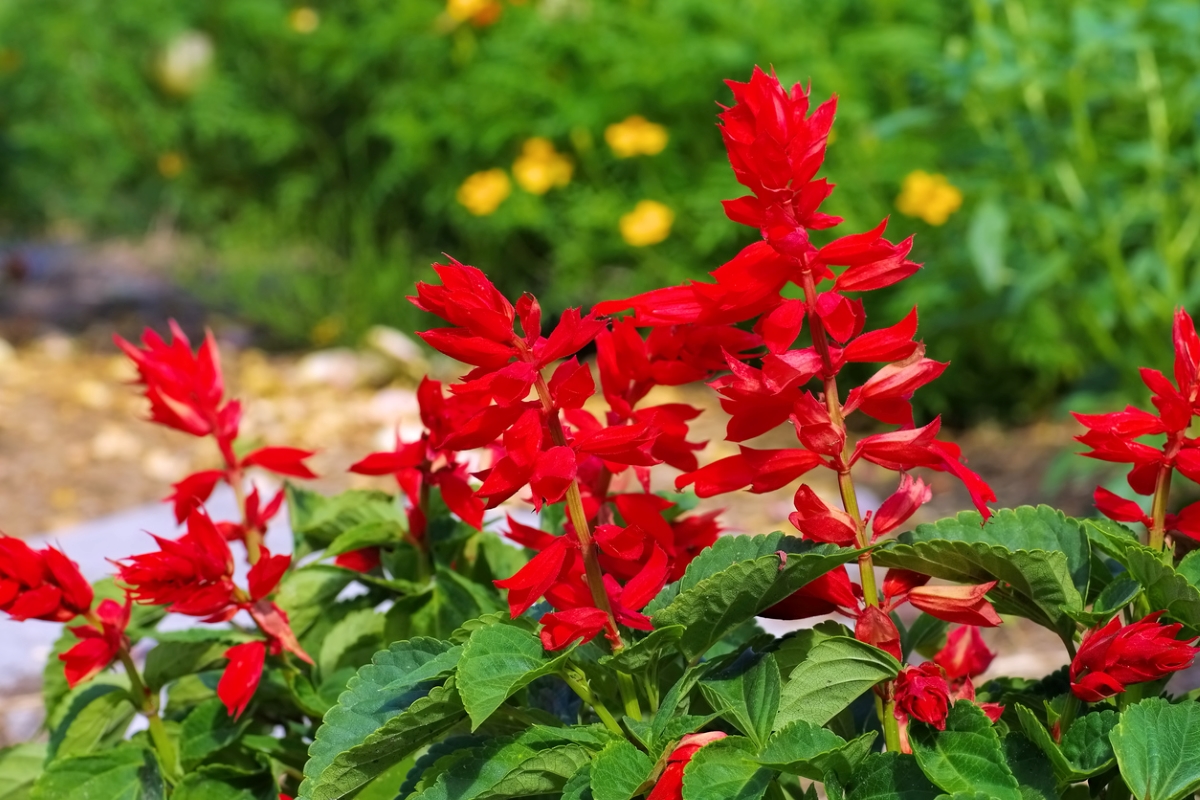
Salvia comes in both annual and perennial varieties, either of which will attract bees. The perennial low-maintenance plant, commonly called meadow sage, performs best in full sun in zones 4 to 9 and comes in several colors, including deep purple-blue. Salvia tolerates heavy soils, is drought-tolerant, and will rebloom if flower spikes are removed after the first bloom. S. officinalis is the perennial herb cousin used in cooking; if left to bloom, it also entices bees.
RELATED: How to Grow Salvia
9. Grape Hyacinth (Muscari armeniacum)
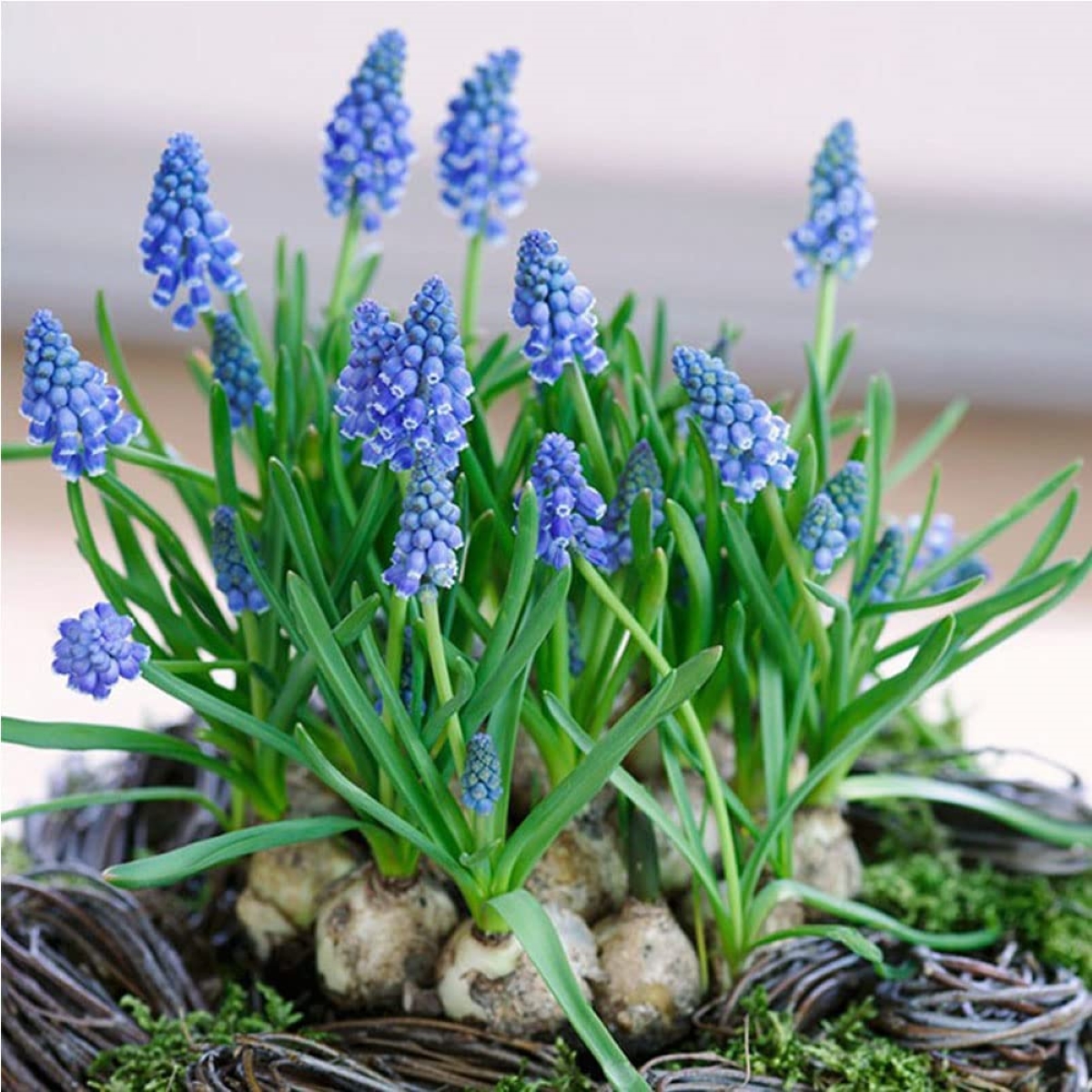
Grape hyacinth is one of the most fragrant blooms in the early spring garden, so it’s no wonder that bees come buzzing to these beautiful bulbs. Earning its name from its tight clusters of blue flowers that resemble grapes, this member of the lily family shouldn’t be confused with hyacinth, which is a completely different flower. Plant grape hyacinth bulbs in fall for spring color in USDA Zones 4 to 8, choosing a spot with sun or part shade and soil that drains well (even sandy soil).
10. Sedum (Sedum telephium or Hylotelephium telephium)
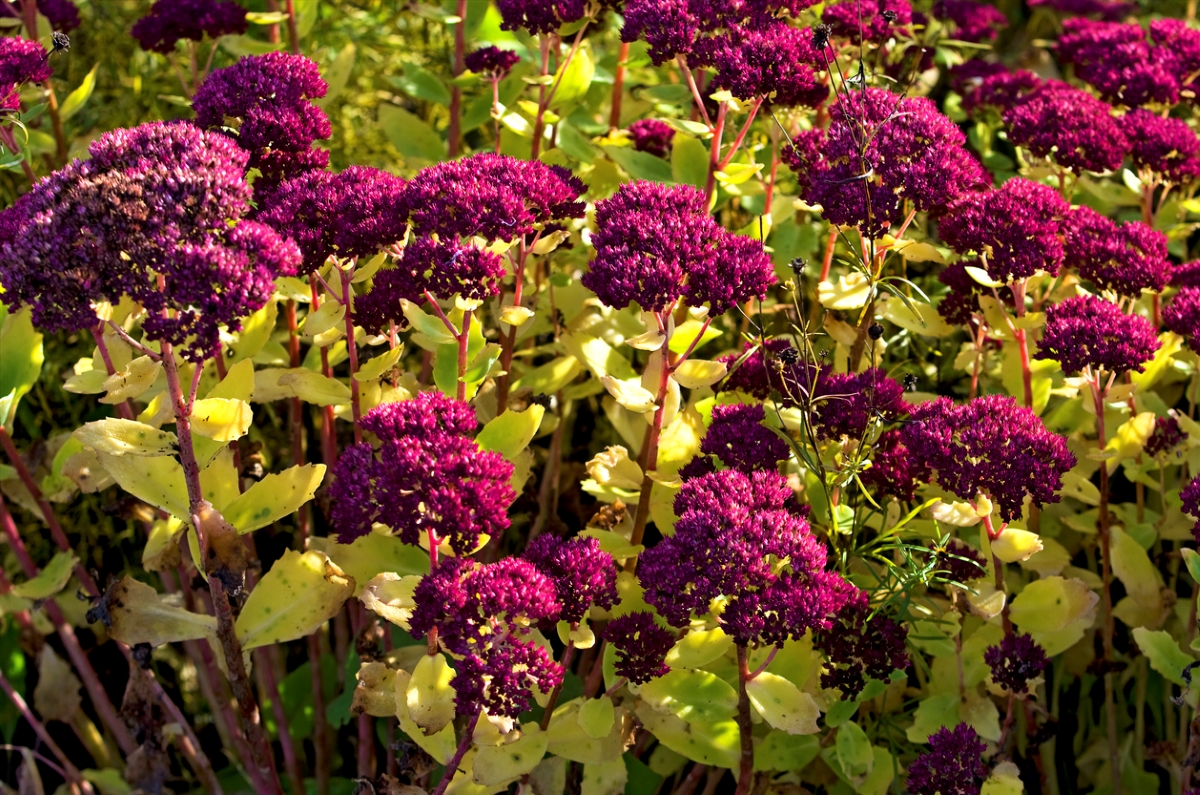
Sedum, also known as stonecrop, offers a late summer and autumn buffet to bees and butterflies alike. From the low and creeping ground cover Goldmoss, to the long-stalked Autumn Joy, there are more than 500 varieties from which to choose. The hardy and drought-tolerant plants are easy to grow in zones 3 through 10, and easily accessible for bees. Most sedums prefer well-draining soil and full sun or partial shade in the afternoon. Add a little compost, but don’t bother fertilizing these easy, hardy bee magnets.
RELATED: The Best Low-Maintenance Ground Cover Plants for Your Property
11. Aster (Aster spp.)
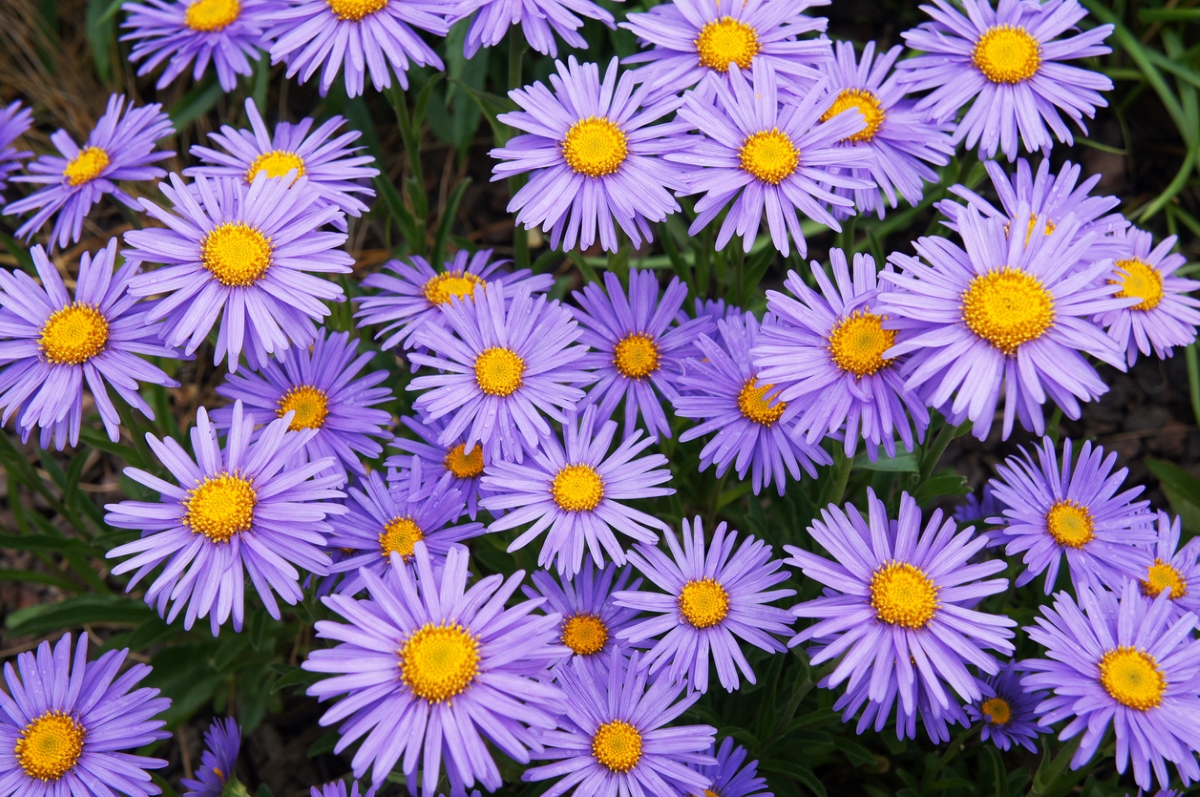
Keep in mind that it is important to include in your garden plants that flower in autumn as well as those that bloom in spring and summer. Astral asters shine at providing important late-season pollen and nectar when little else is blooming. They range in height from 8 inches to 5 feet with narrow “rays” in shades of purple, pink, and white. Their hardiness varies, according to species, from USDA zones 2 to 10.
12. Bee Balm (Monarda spp.)
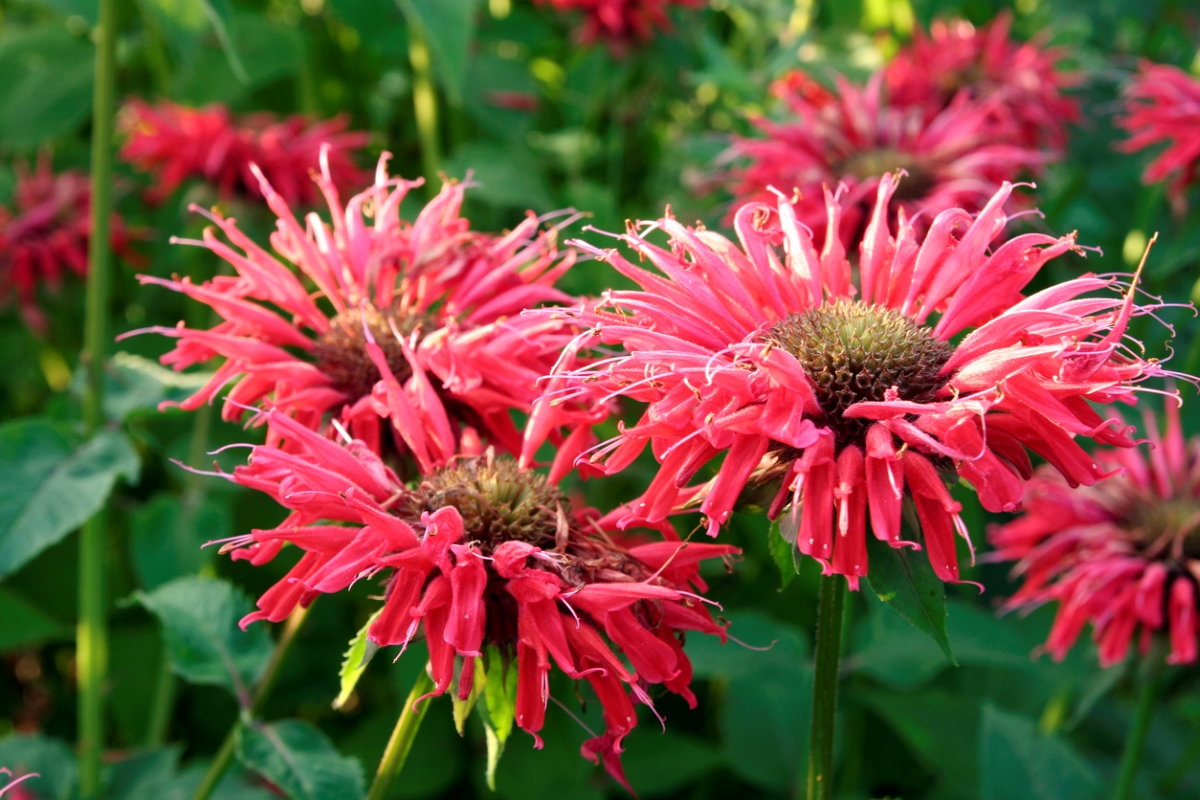
Plants that attract bees often have “bee” in their names. For bee balm, choose lavender or white varieties rather than red types. The tubular blooms on the plants’ tousled flowerheads bee-witch long-tongued visitors such as honeybees and bumblebees but probably will exclude short-tongued types of bees such as miner bees and sweat bees. The plants appreciate full sun to partial shade and vary in size from 2 feet to 4 feet, according to species, and from USDA zones 4 to 10 for perennial types.
RELATED: How to Grow Bee Balm
13. Beeblossom (Gaura lindheimeri)
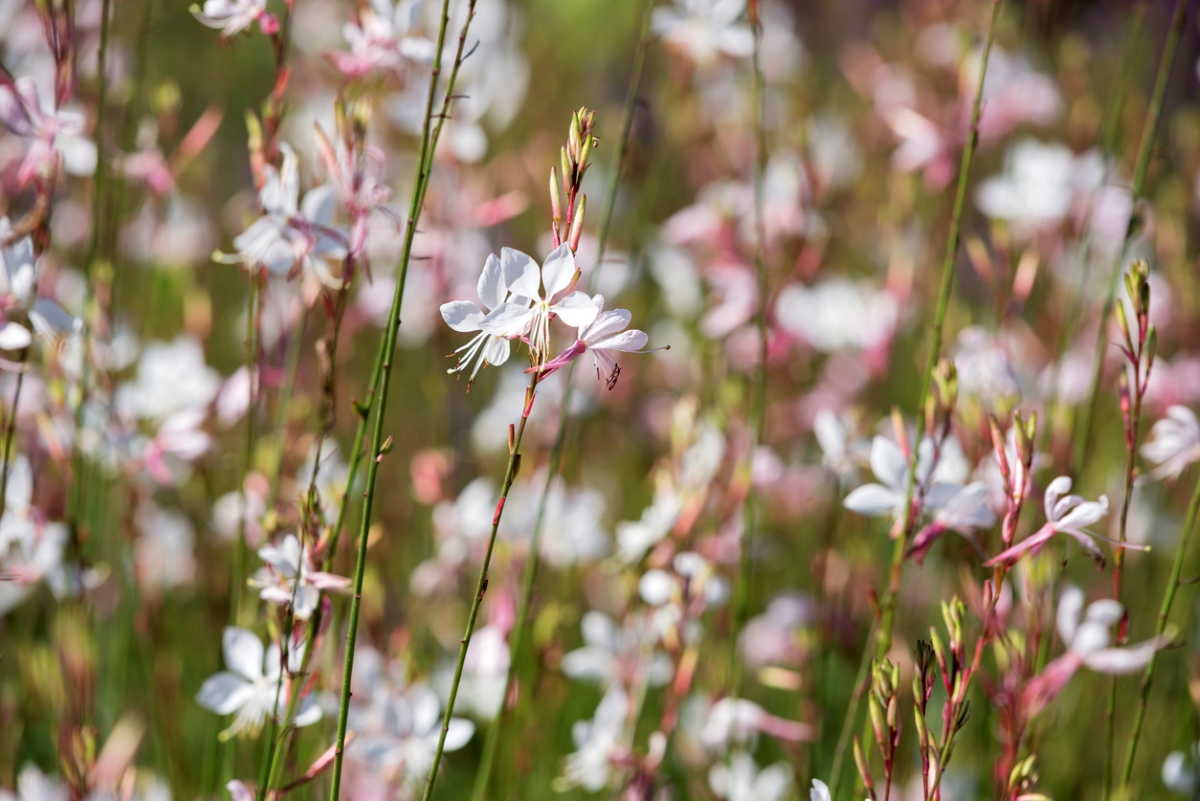
Related to the evening primrose, beeblossom grows to 4 feet, producing 1-inch white or pink butterfly-like flowers from early summer to autumn in USDA zones 5 to 9. Its long blooming season makes it one of the best flowers for bees, who can expect to find flora whenever they return to gaura—until the weather turns frosty anyway. It likes full sun and well-draining soil.
14. Blanket Flower (Gaillardia spp.)
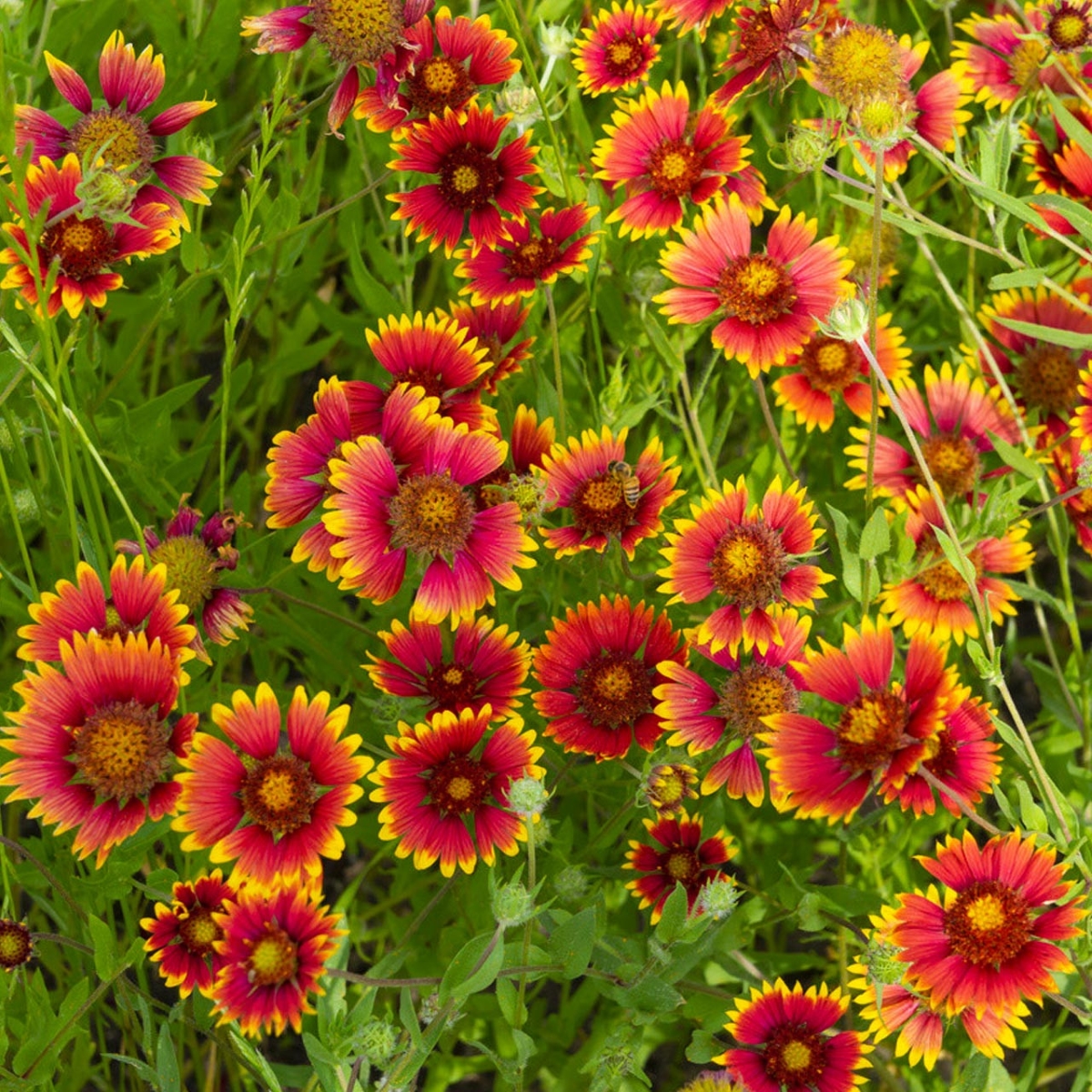
Somewhat resembling brightly colored miniature sunflowers, gaillardias, can bloom from early summer to frost in USDA Zones 5 to 10, blanketing the growing season with a never-ending buffet for the bees. Although their blooms often come in reds and oranges, they usually include some yellow too, which should make it easy for the bees to see them despite the ruddy colors. The most common grandiflora hybrids typically grow from 10 to 30 inches tall and prefer full sun; it is a drought-resistant flower for bees.
RELATED: 14 Long-Lasting Flowers for Your Yard
15. Cleome (Cleome spp.)
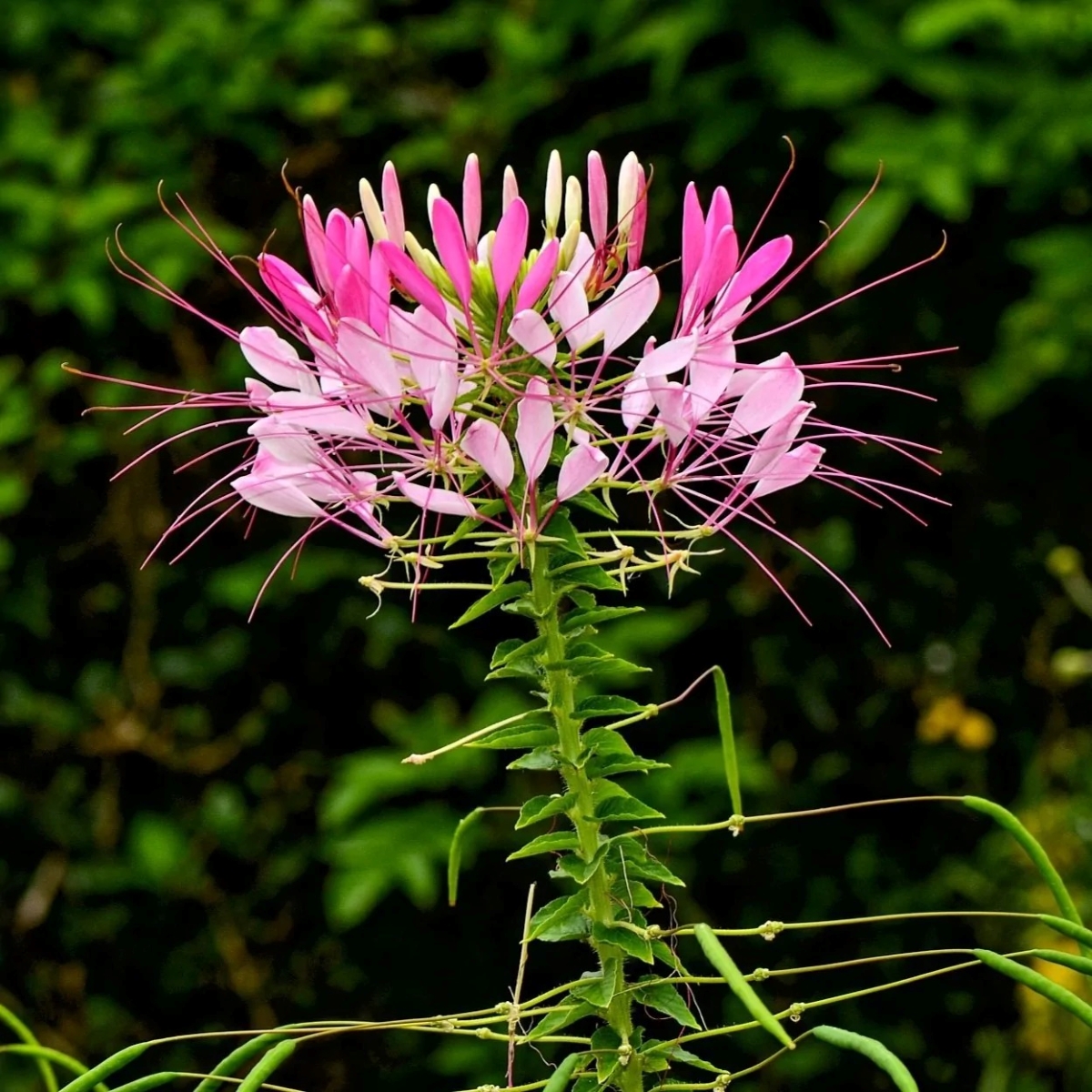
The fact that two native cleomes both go by the name of bee plant—Rocky Mountain Bee Plant (C. serrulata) and Yellow Bee Plant (C. lutea)—indicates how much of a Cleopatra cleome is for those insects. So even the common garden annual Cleome hassleriana should be able to bee-dazzle them. Growing to 6 feet tall with spidery pink, white, or purple blooms all summer, the plants can, according to Wisconsin Extension, be “spiny and sticky,” and occasionally stinky!
16. Cosmos (Cosmos bipinnatus)
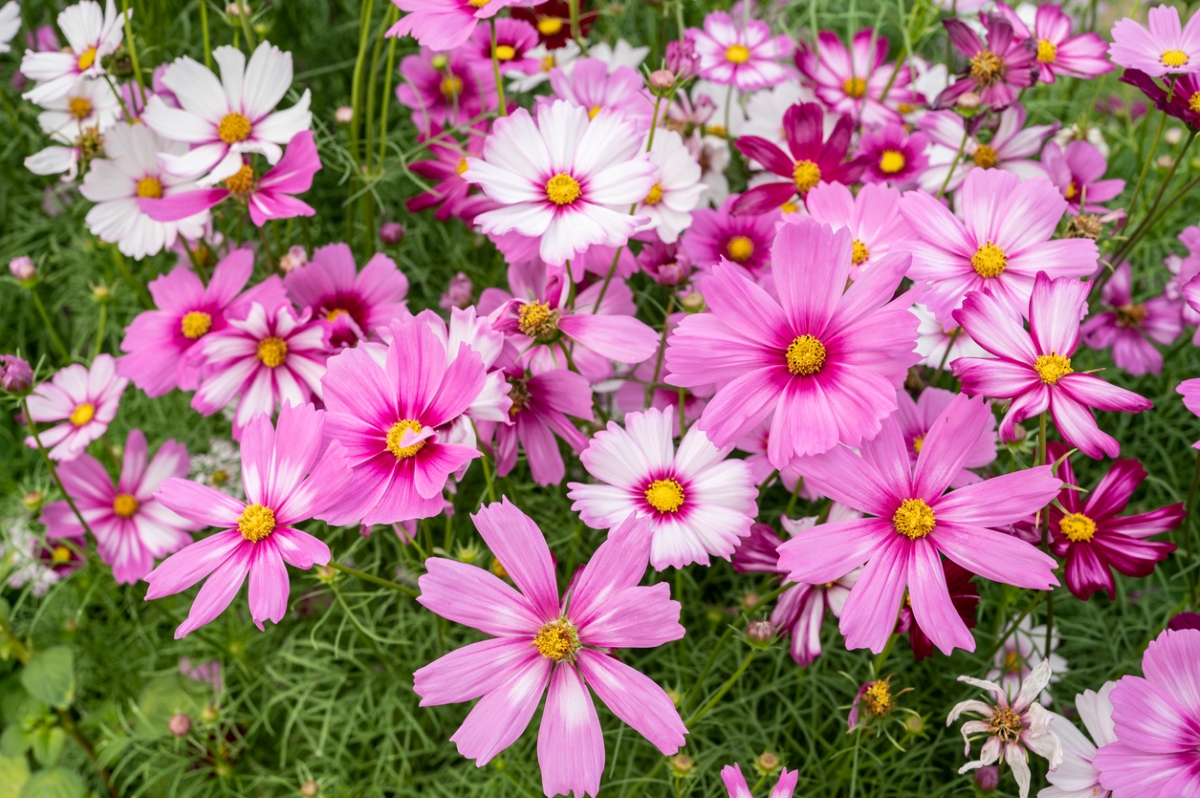
Another among the annual flowers for bees, cosmos typically blooms from midsummer until frost if sown in early summer, perhaps sooner if started indoors. Growing to 8 feet with showy 3- to 4-inch blooms in whites, pinks, lavenders, and maroons and, more recently, yellows (C. sulphureus), they can coax bees into your vegetable garden. Keep in mind the pollen on single blooms is usually easier for pollinators to access than that on fancier double blooms.
RELATED: 11 Florals That Will Give Your Garden an English Cottage Feel
17. Crocus (Crocus spp.)
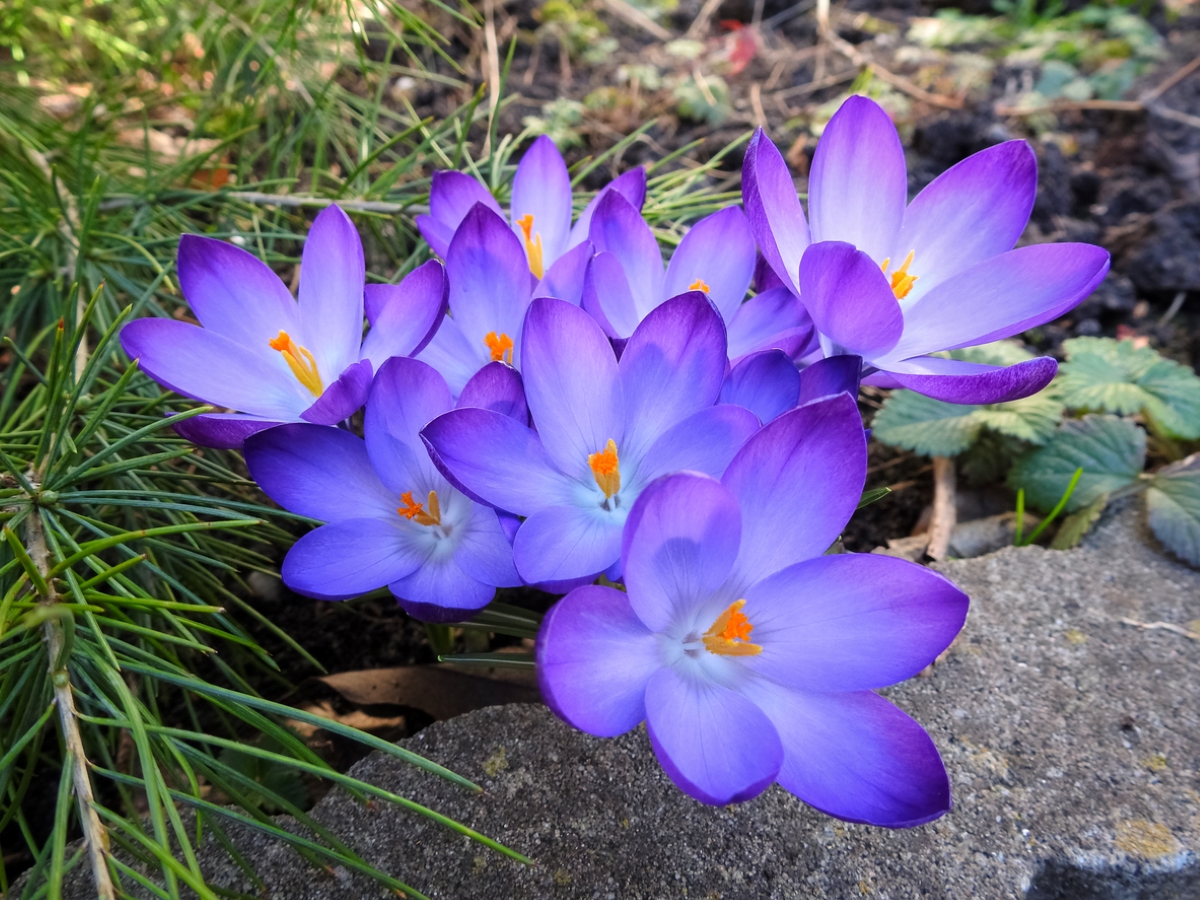
Among the best spring flowers for bees, snow crocus (Crocus chrysanthus) and Dutch crocus (Crocus vernus) appear in very early spring in USDA Zones 4 to 9, and you may see bees just emerged from the hive rolling around in their pollen in what looks like blissful bee-sotted delirium. Plant the bulbs in fall about 6 weeks before the first frost, in soil that drains well; avoid clay or moist soils. If possible, keep the low-growing plants in full sun, which they prefer and where it will be easiest for the bees to see them.
18. Goldenrod (Solidago spp.)
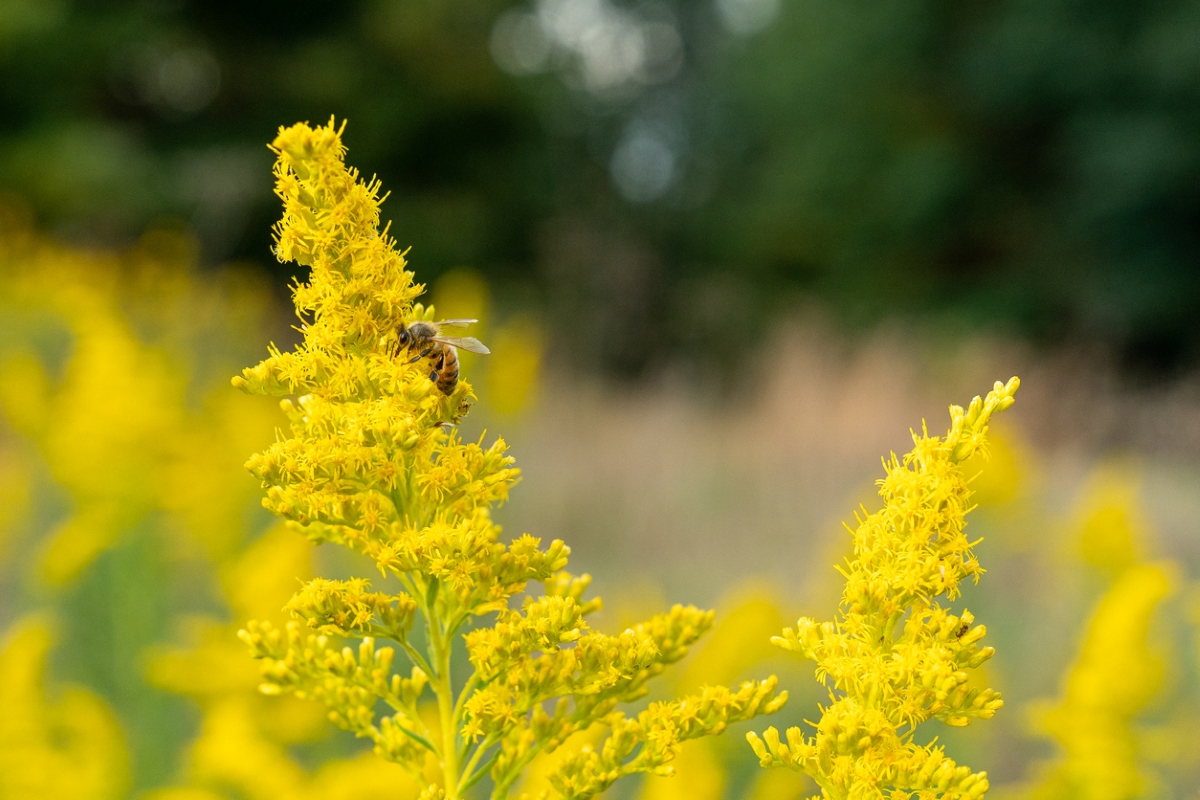
When considering how to attract bees to your garden, don’t forget wildflowers. Although this one can be a pernicious weed in much of USDA zones 4 to 9, bees are bee-guiled by it, as is proved by how many beekeepers sell goldenrod honey. In areas where the plant is a novelty rather than a nuisance, gardeners may want to try growing compact cultivars such as Golden Fleece in full sun. These late summer/early autumn bloomers give bees plenty of late-season pollen and make spectacular cuttings for arrangements.
RELATED: Ragweed vs. Goldenrod: A Case of Mistaken Identities
19. Milkweed (Asclepias spp.)
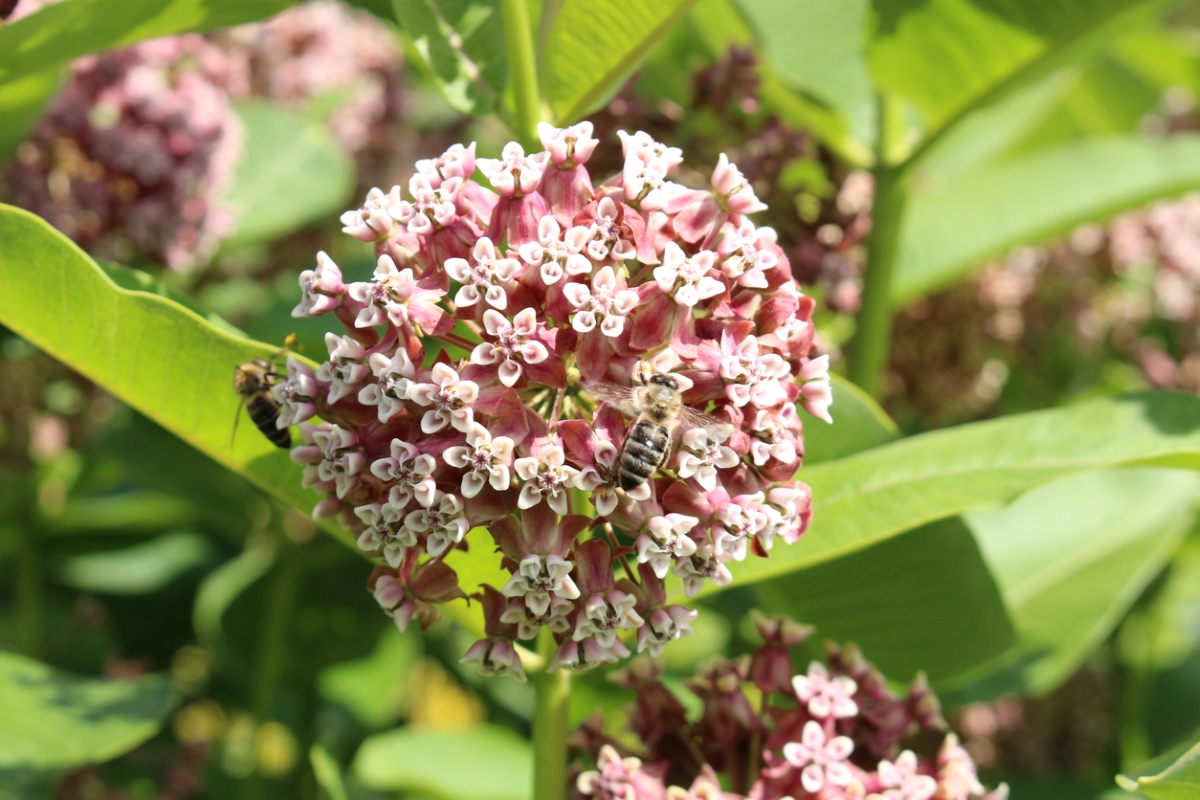
Although better known for feeding butterflies, milkweed also can be highly attractive to bees who nosh enthusiastically on its nectar. The annual tropical type will bloom all summer, but perennial varieties—hardy in USDA zones 2 or 3 to 9 and growing to 3 feet—generally flower only in early to mid-summer. Choose the type (common, swamp, tropical, or whorled) that should do best in your soil and conditions, and plant or sow it in full sun in spring or fall. According to a University of California blog, bees can become trapped in or stuck to milkweed flowers but that doesn’t prevent their making a beeline to those blooms.
20. Sweet Alyssum (Lobularia maritima)
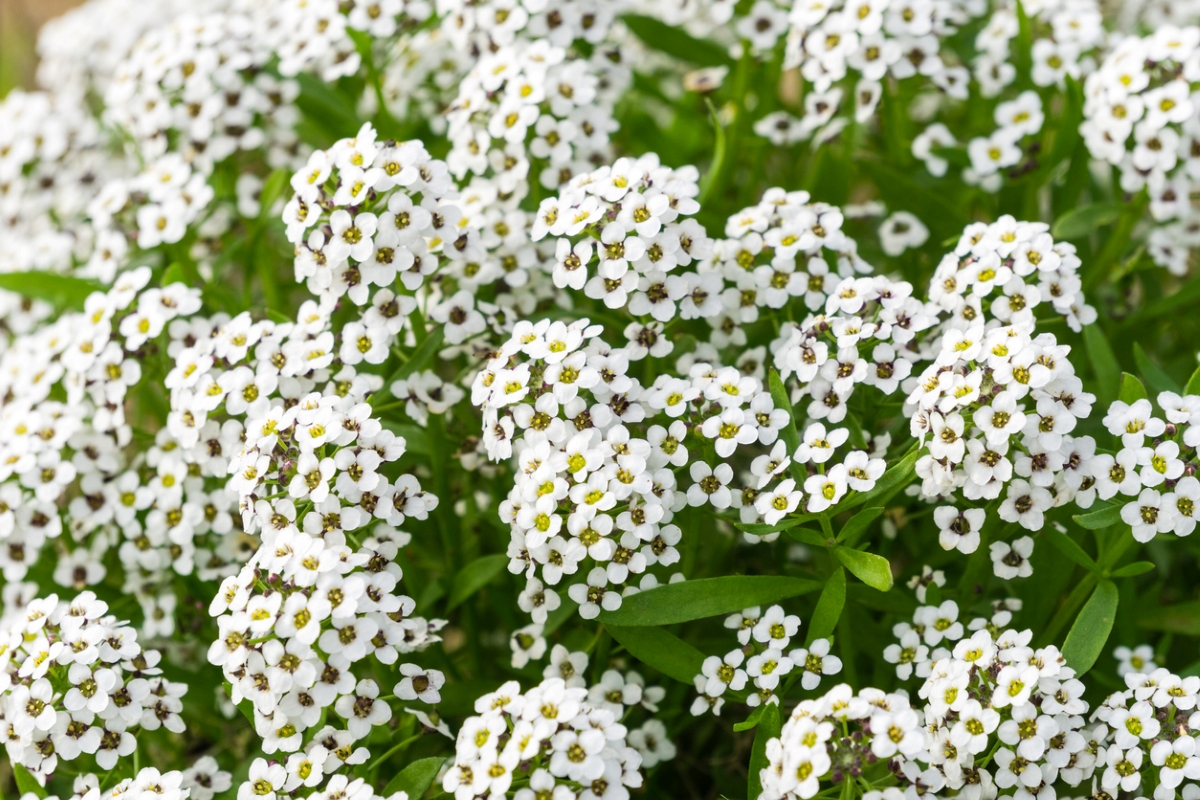
What attracts bees? The scent of honey. Sweet alyssum only grows to between 3 and 12 inches with clusters of tiny white, pink, or violet flowers, but the fragrance of those blooms brings the bees in like, well, “bees to honey.” Use it as a low-growing bedding plant near taller flowers for contrast. The hardy annual also can bloom from the spring swarm season through late autumn’s hive-up-to-keep-warm season in full to partial sun. However, it may stop flowering during the hottest part of the summer in some climates.
